After a thrilling ending due to Trafford’s save from Abel Ruiz’s penalty kick in the 98th minute, England secured their first U21 European Championship title in 39 years.
The Young Lions showcased an outstanding performance throughout the tournament, maintaining clean sheets in every match — the first nation since Spain in 2013 to reach the final without conceding — marking a significant milestone for England’s promising generation.
Although Spain didn’t claim the title, they displayed exceptional performance throughout the tournament, including a notable presence in the final.
This tactical analysis provides an in-depth examination of England’s tactics to secure the championship against the Spanish team.
Lineups
Lee Carsley opted for a 4-4-2 structure on paper, though that changed in different phases of play.
England’s starting XI (average age 22.2 yrs) was as follows: James Trafford (GK), James Garner (RB), Taylor Harwood-Bellis (RCB), Levi Colwill (LCB), Max Aarons (LB), Cole Palmer (RM), Angel Gomes (RCM), Curtis Jones (LCM), Emile Smith Rowe (LM), Morgan Gibbs-White (RCF), Anthony Gordon (LCF).

In opposition, Santi Denia elected to deploy a 4-4-1-1 formation.
Spain’s starting XI (average age 22.9 yrs) was as follows: Arnau Tenas (GK), Victor Gómez (RB), Aitor Parades (RCB), Jon Pacheco (LCB), Juan Miranda (LB), Antonio Blanco (RCM), Álex Baena (LCM), Rodri Sánchez (RW), Oihan Sancet (AM), Sergio Gómez (LW), Abel Ruiz (CF).
La Rojita deny the Young Lions
Despite their impressive tournament performance and possession of technically skilled players, the English team struggled to overcome Spain’s intense high-pressing in the final match. Spain applied a solid pressing scheme right from the start, aiming to regain possession in advanced areas and create scoring opportunities.
During the build-up phase, England employed a 4-2 base (two centre-backs, fullbacks, and two central midfielders) with the goalkeeper James Trafford, the newly transferred from Manchester City to Burnley, usually playing a crucial role in initiating this phase.
In the below graphic, England’s wingers, Smith Rowe and Palmer, attempted to pin Spain’s defensive line, while Gibbs-White and Gordon dropped deeper into the half-spaces, forming a 4-2-2-2 shape.
Conversely, Spain employed a hybrid pressing scheme (combining positional and man-marking approaches). The two in the first line focused on closing passing lanes and marking England’s central midfielders while preparing to press the centre-backs.
Baena, positioned in the second line, was ready to press either player depending on the direction of the ball. The wingers, Gomez and Rodri Sanchez, were responsible for pressing England’s fullback. At the same time, defender Jon Pacheco advanced to mark the dropping striker Gordon, and Blanco slightly shifted to the right to mark Gibbs-White.

The match witnessed its first significant scoring opportunity in this particular scene as the England team attempted to find the free man. Following a bouncing ball between Harwood-Bellis and goalkeeper Trafford, who was immediately under the press, made a quick decision to play a long ball towards James Garner. However, Sergio Gomez intercepted the ball, recovering it quickly before reaching the former Manchester United player.

Subsequently, Alex Baena found himself on the edge of the penalty box, taking advantage of an unorganised English defence. Seizing the opportunity, the Spaniard unleashed a shot that narrowly missed its target, registering the first genuine threat to the goal.

Recognising the lack of movement from Curtis Jones and Gomez behind Spain’s first line of pressing, trying to open small passing lanes in narrow distances, along with the ineffective dropping off of the strikers and the team’s physical disadvantage in long balls, the Irish coach Lee Carsley sought to react.
In the depicted scene, Smith Rowe deviated from his usual position on the wing to the middle, adding some creativity to play out through the press. Meanwhile, Gordon shifted to the wing to provide width.
Noticing that Spain’s centre-back did not step forward to mark Gibbs-White, a numerical advantage of 2v1 against Blanco, the pivot, was created.
Curtis Jones positioned himself slightly to the left, drawing the Spain striker outward and opening up a vertical passing lane for Smith Rowe. However, Blanco quickly decided to press Smith Rowe, effectively preventing him from making a decisive turn with a single dynamic movement.


We observed a promising Spanish pivot with the potential to develop similarly to Rodri in Real Madrid‘s young midfielder Antonio Blanco.
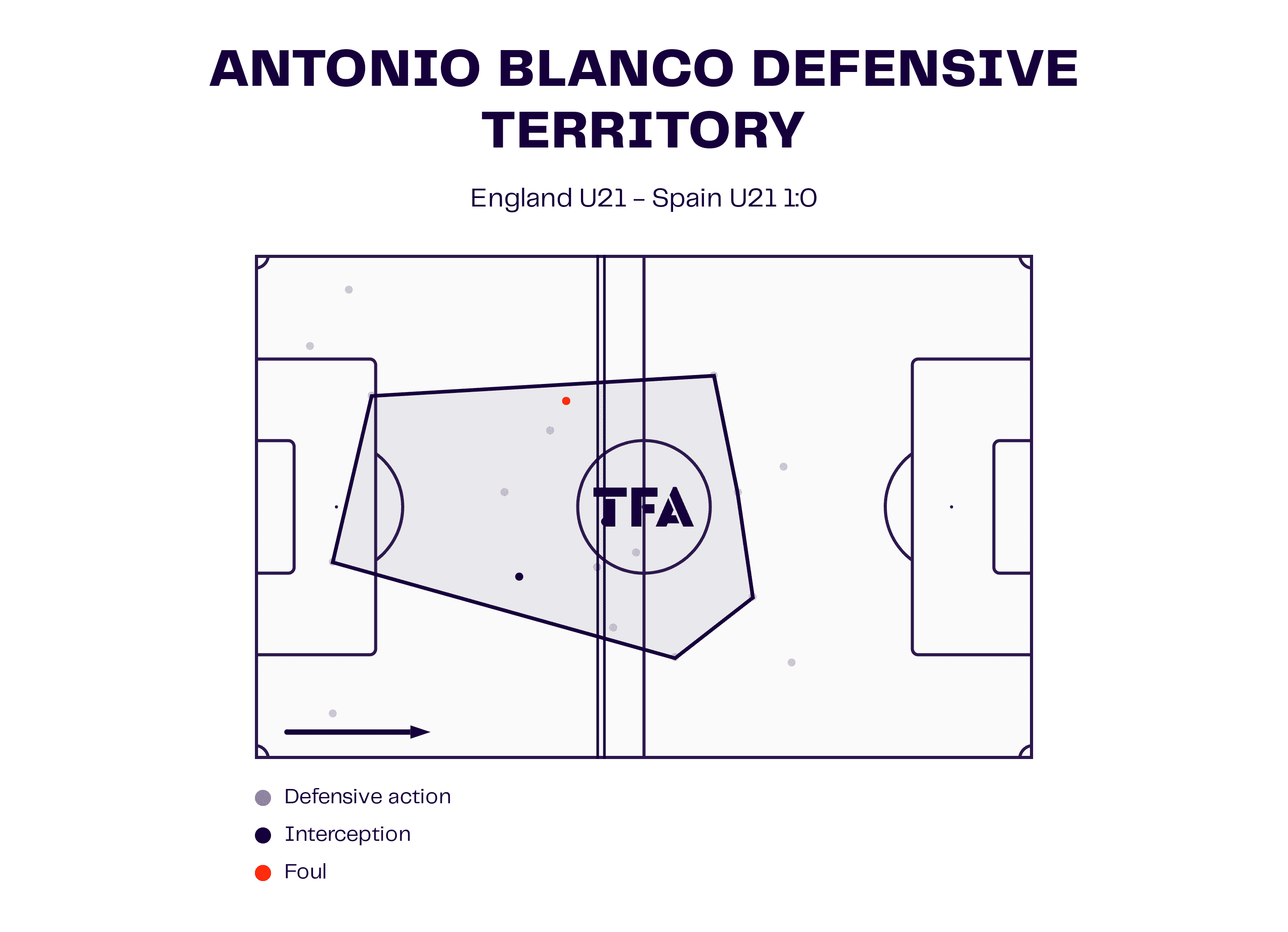
The ball was intercepted in a high position, leading to a combination. Then Sánchez took a shot to the left of the goalkeeper that was close but missed the goal.

As the match progressed, England attempted to overcome their press by resorting to long balls targeting Gibbs-White or by altering the building dynamic itself.
In the provided image, a different approach is observed, where the left back, Max Aarons, positioned himself higher up the field right from the beginning of the build-up phase.
The team aimed to transition into a 4-1 dynamic by dropping Gomez down to the left back, creating space. Smith Rowe would then drop off to receive the ball in the generated space. However, Blanco was also present, and the idea did not succeed much.

Cole Plamer is the trigger and the outlet
In contrast, England’s chances and threats in the match — with the Young Lions generating an xG value of 0.96 compared to Spain’s 3.07 (as per Wyscout) — primarily came from their ability to win second balls and initiate their attacks from advanced areas or quickly regain possession after applying high or midblock.
During periods of high pressure, the English team adopted a 4-2-4 high-pressing scheme, in which Cole Palmer of Manchester City played a pivotal role as the trigger, curving his run inward to press the nearest centre-back while One of Gibbs-White and Gordon would mark Blanco Spain’s No. 6, and the other pressed the remaining centre-back. This left Spain’s left-back momentarily free, and England’s two central midfielders could protect the centre area.

Even though it was often a pressing trap, Spain aimed to penetrate the centre or find the spare man. In the given scene, Palmer initiated the press, with Gordon positioned near the other centre-back and Gibbs-White marking the No. 6. Meanwhile, Sancet, in the shadow of Curtis Jones, adjusted his position slightly to create a passing lane to receive.

However, the talented Chelsea defender Colwill reacted swiftly to the situation, advancing to meet Sancet, executing a tackle, and regaining possession again.

Throughout the tournament, Colwill showcased his immense talent as a robust defender, highlighting his potential as a key player for Chelsea in the future.
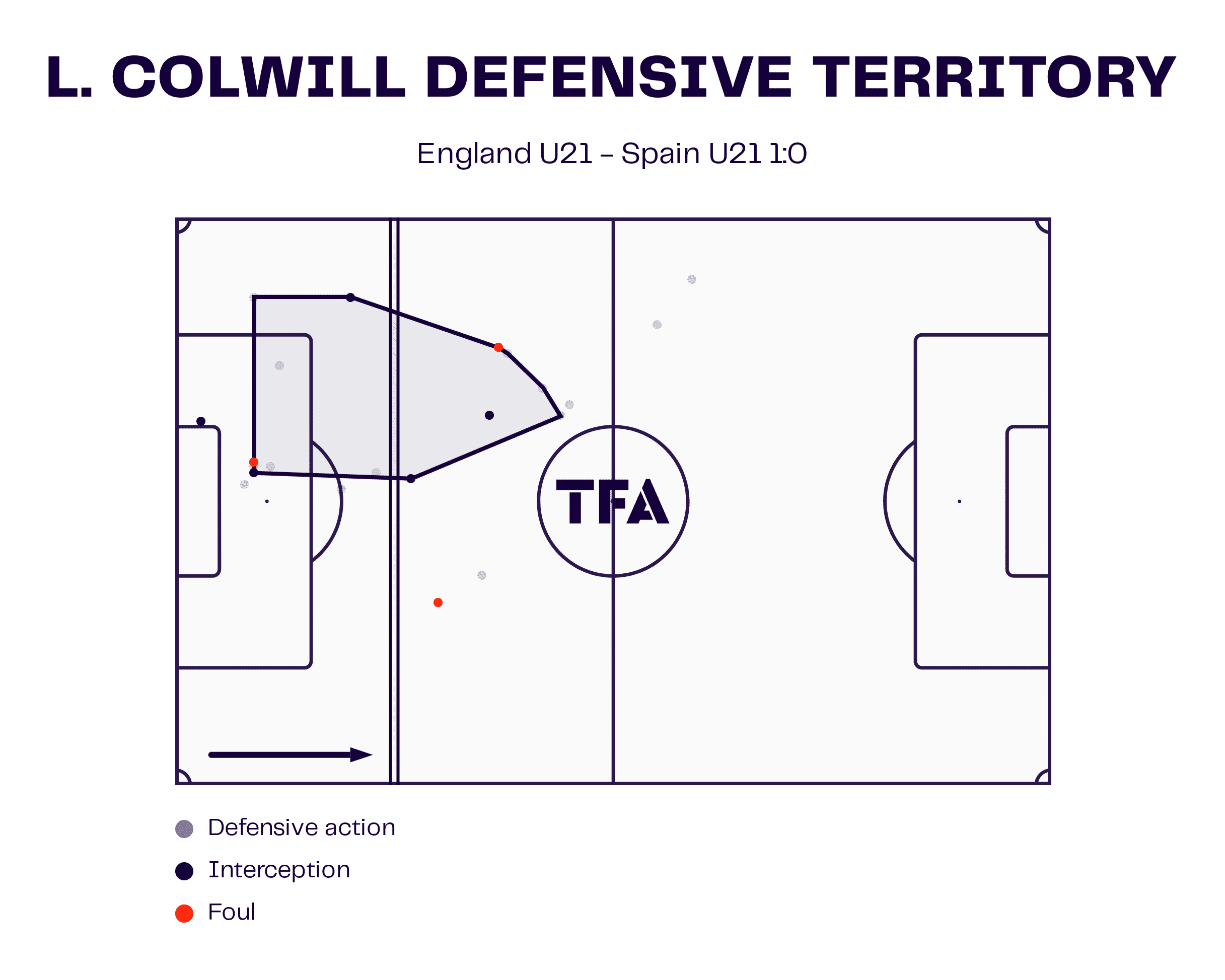
Aware of the potential threat posed by the spare left-back, Angel Gomes occasionally positioned himself centrally, slightly to the right, to closely monitor him while maintaining defensive depth. In the provided graphic, the goalkeeper finds Baena in a spacious area, but Baena fails to control the pass.

Nevertheless, Spain occasionally managed to find the spare fullback through third-man combinations. In the following scene, Baena quickly dropped deep to get involved, followed closely by Angel Gomes.

Once the ball was received, Miranda had ample time and space, with the winger pinning Garner. This was a pressure trap using the touchline, as Palmer, Angel Gomes, and Garner accelerated their pressing speed, forcing Spain’s Gómez to play a long ball back once again.

Transitions are the key
The most dangerous chances created by England in the match came during transitions, as they capitalised on the pace of players like Gordon, Palmer, and Gibbs-White — with Curtis Jones and Smith Rowe providing the creative passes to release them into space.
The scene depicted below occurred just before the foul, resulting in Colwill’s header hitting the crossbar. Palmer initiates the press again, and the ball-holding defender passes to his teammate.
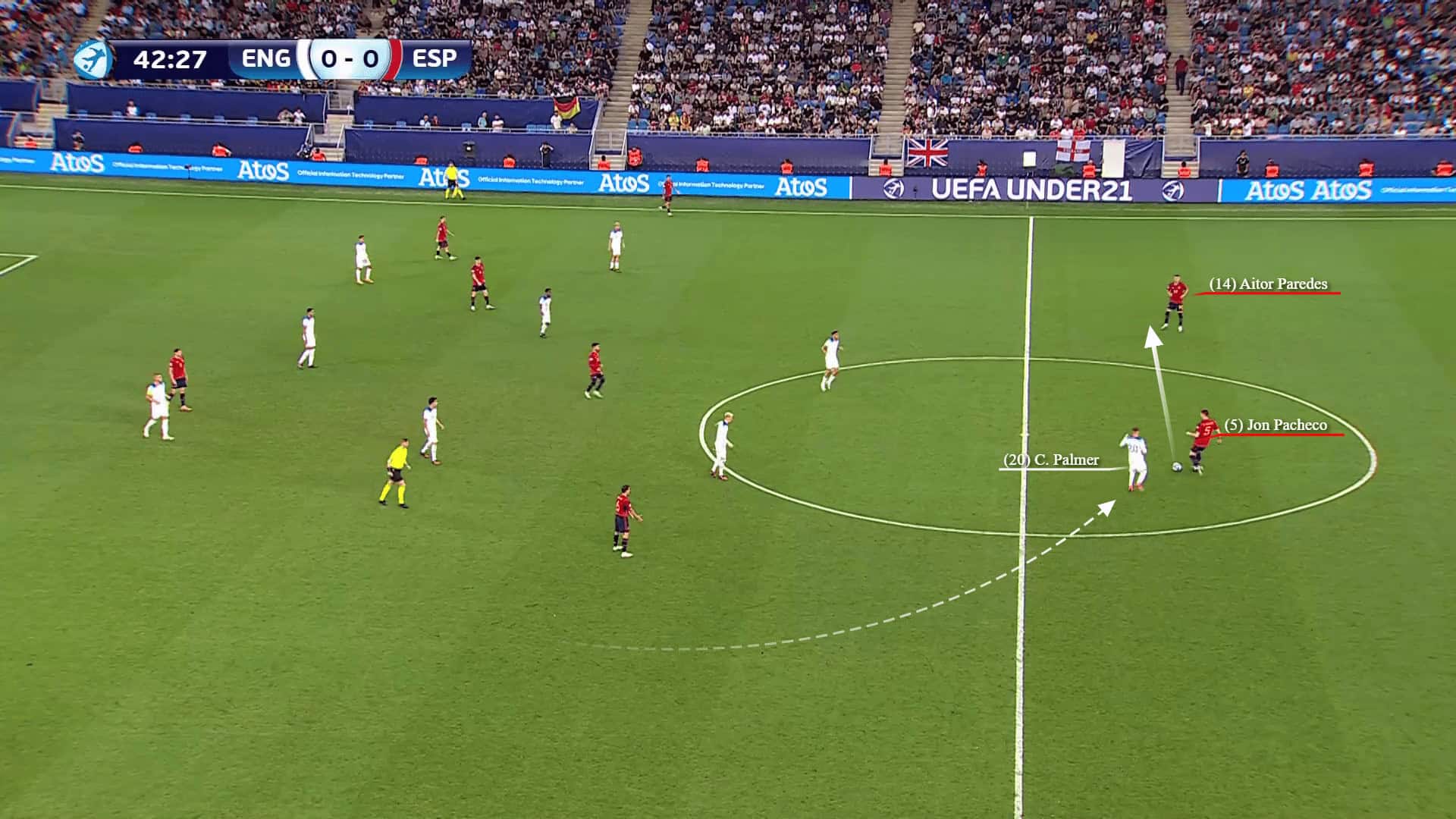
The latter tried to pass to Sanset; in response, Smith Rowe, positioned between the right-back and the midfielder, reads the play well and intercepts the pass.
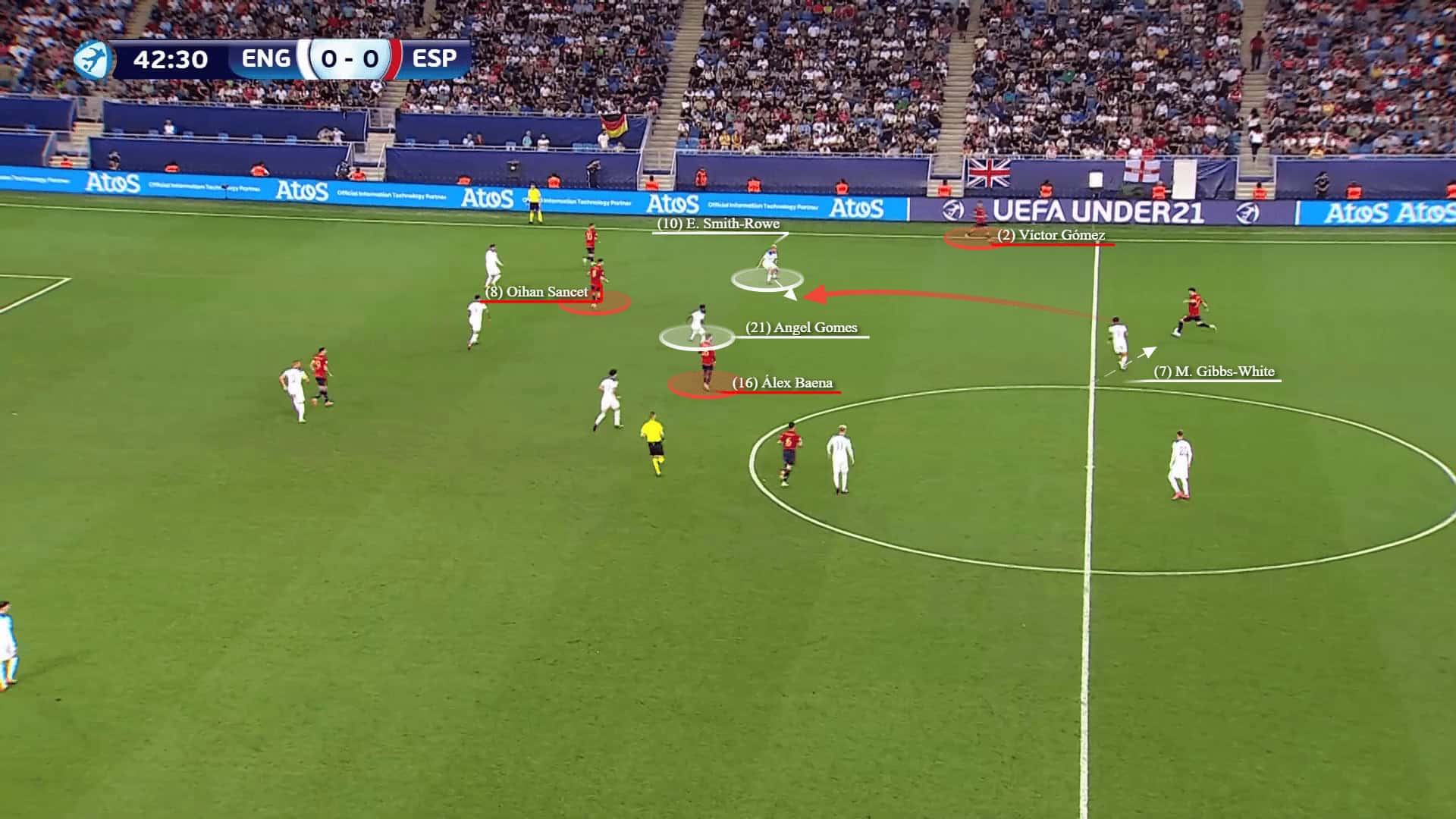
After intercepting the ball, Smith Rowe advanced and drew a foul from a higher position, nearly leading to the first goal.
The first goal for England also came from a foul. Palmer played the ball, which ultimately deflected off Curtis Jones and found its way into the net.
Transitions played a crucial role in the second half, and Curtis Jones missed a dangerous opportunity that could have determined the score.
Once again, Palmer presses, and Jones successfully tackles the Spain midfielder after receiving, regaining possession while England had a 3v2 advantage against a disorganised defence, setting up a potential counterattack.
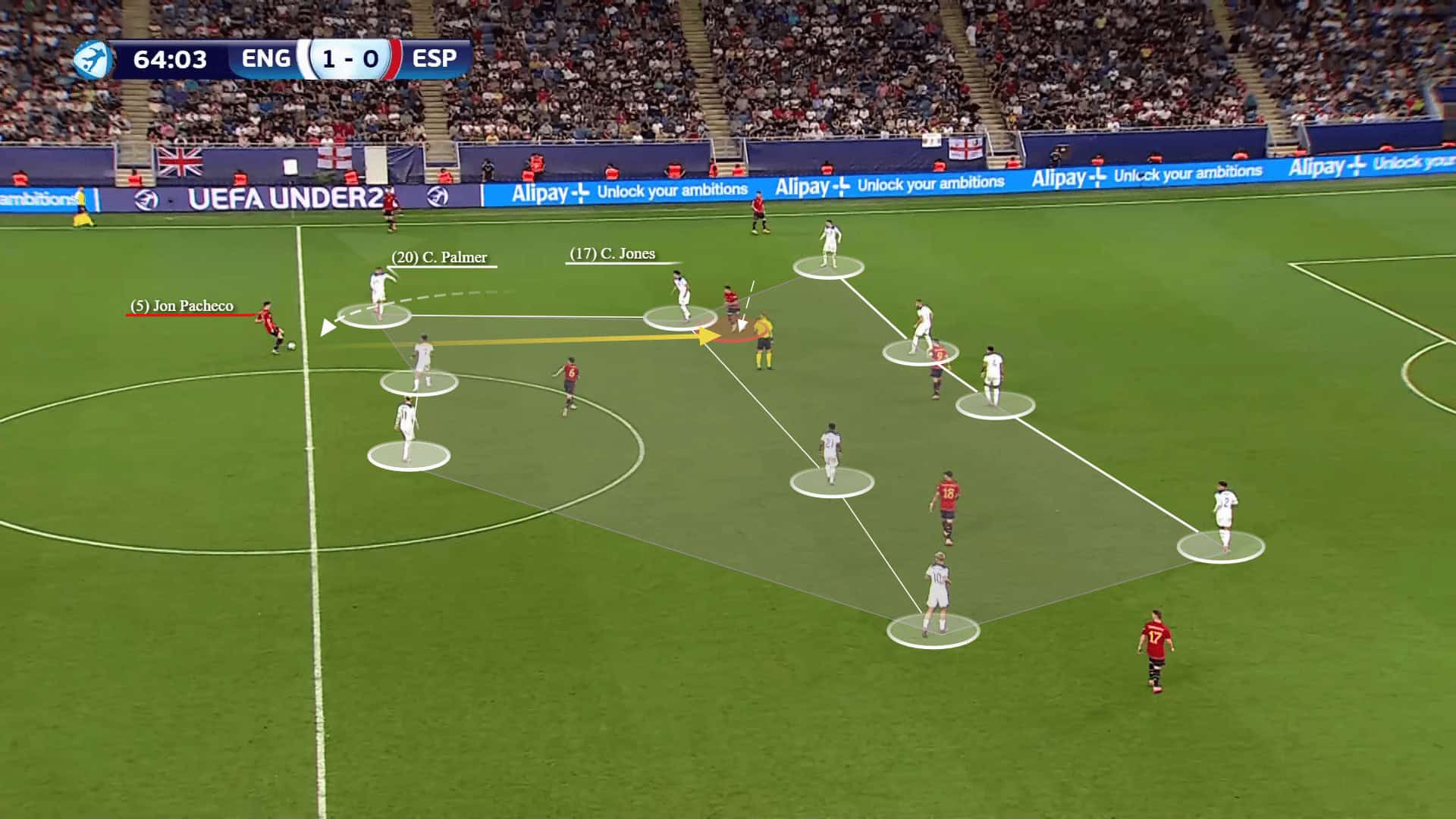
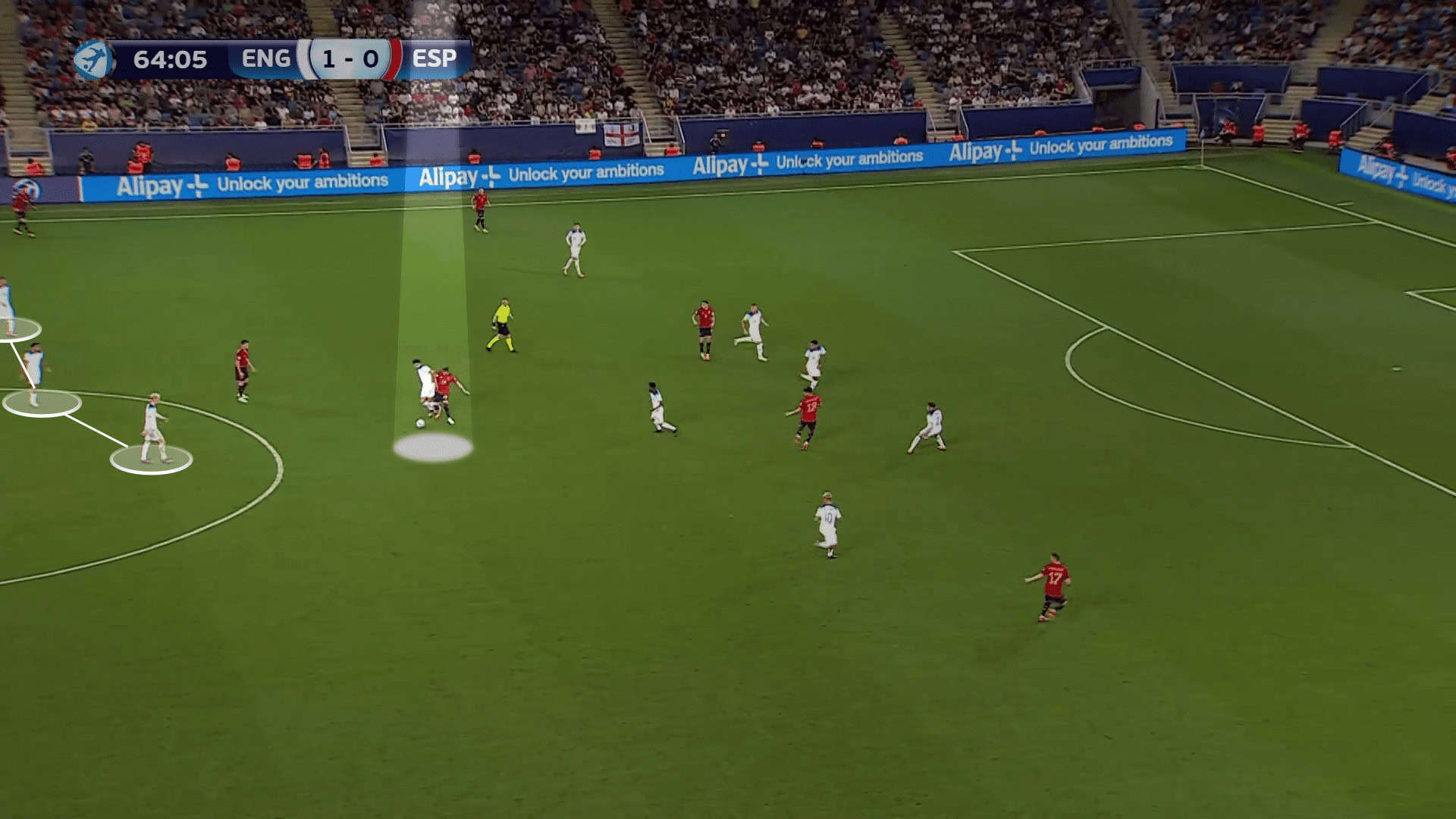
Jones opts to delay and advance further, not to release one of the runners who were moving in different directions.
Upon entering the penalty area, Jones had an opportunity to set up Gordon for a one-on-one situation with the goalkeeper. Still, he decides to shoot with his weaker foot, resulting in a missed opportunity from one of the most dangerous balls in the match.
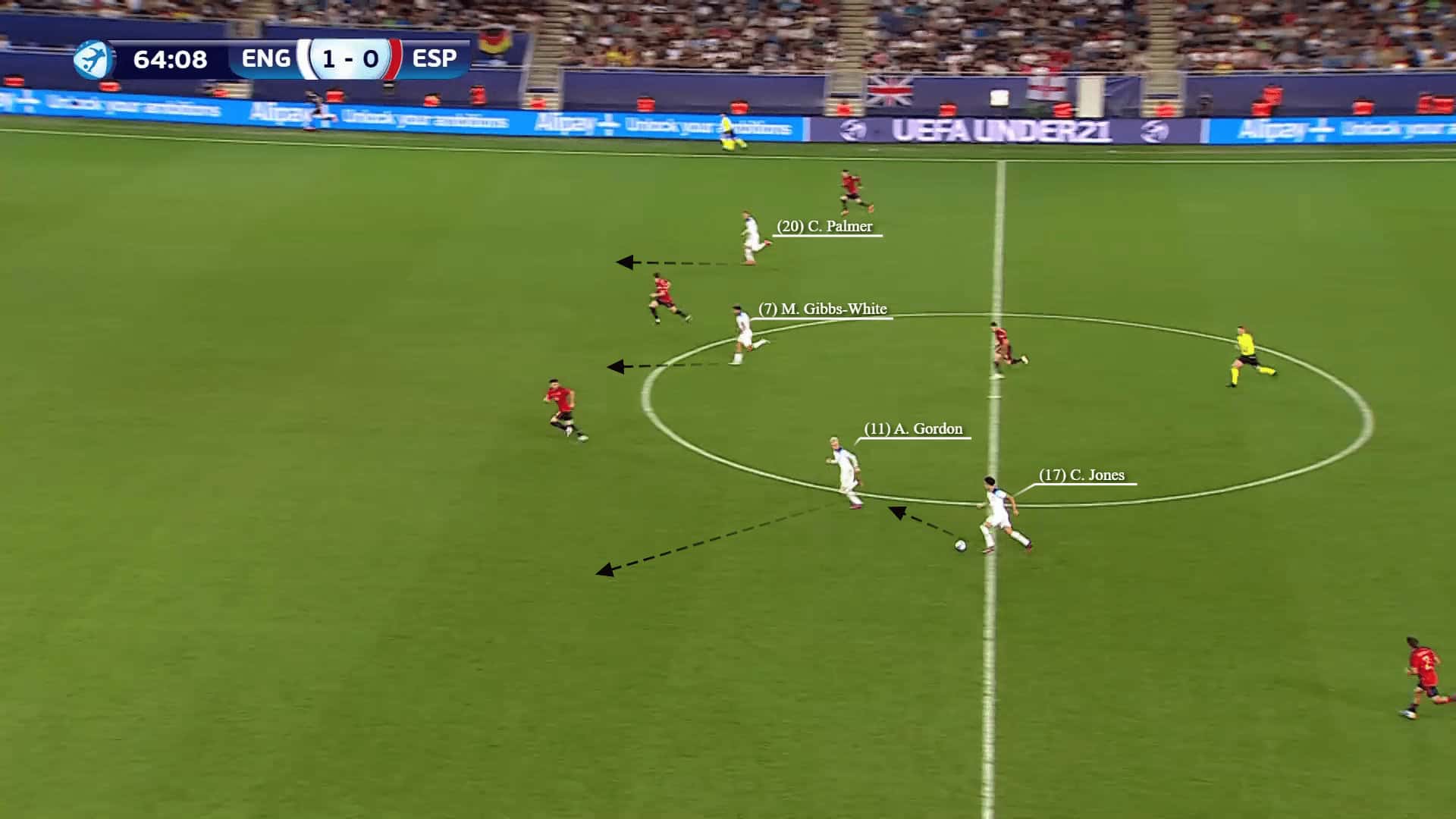
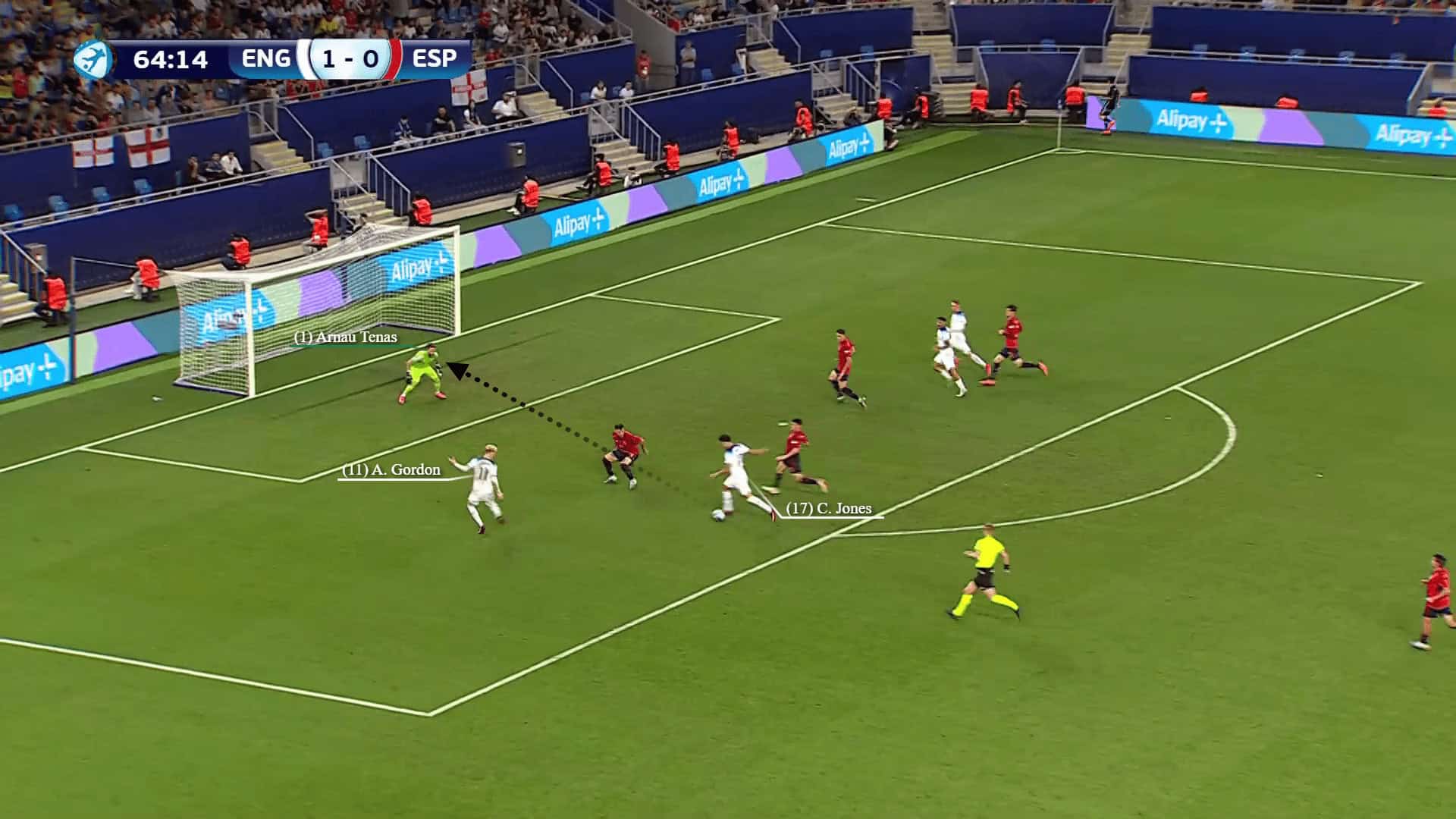
Summary
In conclusion, the analysis showed that England had emerged victorious, securing the title with a promising team that consisted of players who could potentially transition into the first team.
Similarly, it appeared that Spain are on the cusp of building a strong team, capable of integrating some aspects of strength into their first team.
Both teams showcased the potential for future success with their talents.





Comments